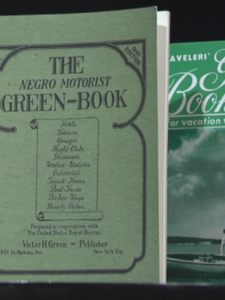
*The Negro Motorist Green Book is celebrated on this date in 1936.
Also called The Negro Motorist Green Book, The Negro Travelers' Green Book, or simply the Green Book) It was an annual guidebook for African American vacationers. It was originated and published by Black, New York City mailman Victor Hugo Green until 1966, during the era of Jim Crow laws, when open and often legally prescribed discrimination against Blacks and other non-whites was common.
Although pervasive racial discrimination and poverty limited Black car ownership, the emerging Black middle class bought automobiles as soon as they could but faced various dangers and inconveniences along the road, from the refusal of food and lodging to arbitrary arrest. In response, Green wrote his guide to services and places relatively friendly to Black people, eventually expanding its coverage from the New York area to much of North America, parts of Canada, Mexico, the Caribbean, and Bermuda, and founding a travel agency.
Many Blacks took to driving to avoid segregation on public transportation. As the writer George Schuyler put it in 1930, "all Negroes who can do so purchase an automobile as soon as possible to be free of discomfort, discrimination, segregation, and insult." Black athletes, entertainers, and salesmen also traveled frequently for work purposes. Black travelers faced white-owned businesses refusing to serve or repair their vehicles, being refused accommodation or food by white-owned hotels, threats of physical violence, and forcible expulsion from whites-only "sundown towns." Green founded and published the Green Book to avoid such problems, compiling resources "to give the Negro traveler information that will keep him from running into difficulties, embarrassments and to make his trip more enjoyable."
The maker of a 2019 documentary film about the book offered this summary: "Everyone I was interviewing talked about the community that the Green Book created: a kind of parallel universe that was created by the book and this kind of secret road map that the Green Book outlined." It was little known outside the Black community. Shortly after the passage of the Civil Rights Act of 1964, which outlawed the types of racial discrimination that had made the Green Book necessary, publication ceased. There has been a renewed interest in it in the early 21st century, particularly in studies of Black travel during the Jim Crow era. Four issues (1940, 1947, 1954, and 1963) have been republished in facsimile (as of December 2017) and have sold well. The New York Public Library Digital Collections has now digitized twenty-three additional issues.